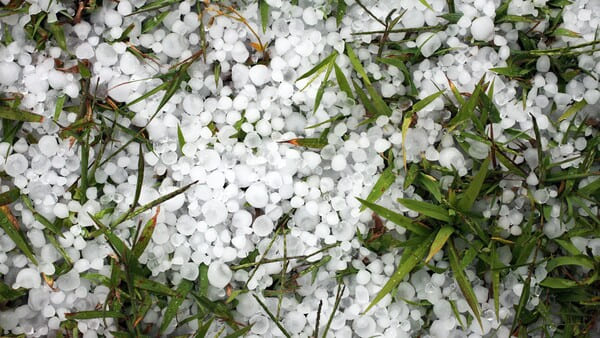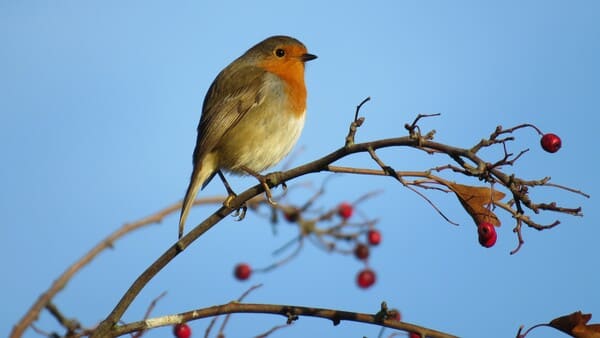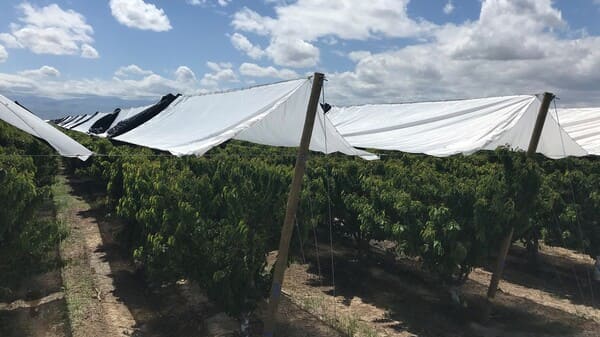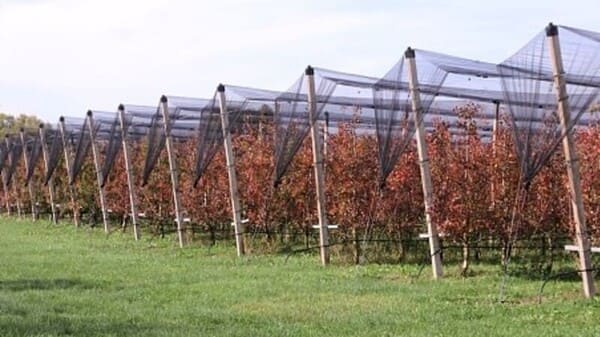Introduction
Cherries, with their luscious taste and vibrant colors, have enchanted fruit enthusiasts for centuries. From ancient orchards to modern plantations, these delectable fruits have a rich history and global appeal.
With the development of refrigeration transportation technology, fresh cherries can be quickly transported to the table in various countries. During the northern Hemisphere’s winter fruitless season, cherries in the southern Hemisphere are in harvesting season, such as Chile, Australia, etc.

In this way, fresh cherries from the southern Hemisphere meet the fruit needs of northern consumers. Nowadays, cherries are becoming more and more popular all over the world.
Countries of Cherries
As the develpment of cherries market, more and more growers choose to plant the cherries. Cherries thrive in various climatic conditions, resulting in diverse growing regions across the globe.
Cherries in Chile
Chile has emerged as a prominent player in the global cherry market, thanks to its unique geography and favorable climate. The country’s cherries are known for their exceptional quality and extended harvest season, making Chile a key supplier during the off-season in the Northern Hemisphere.

Chilean cherry production is concentrated in the central regions, including Maule, Ñuble, and O’Higgins. The country’s cherries, which include varieties like Bing, Lapins, and Sweetheart, are celebrated for their vibrant colors, sweet flavor, and excellent post-harvest longevity.
Cherries in Australia
Australia’s cherry industry has experienced remarkable growth, driven by its diverse growing regions and commitment to producing premium cherries. The major cherry-growing regions in Australia include the Yarra Valley in Victoria, the Adelaide Hills in South Australia, the Orange region in New South Wales and Tasmania.

Australian cherries are renowned for their superb quality, flavor, and size. Varieties such as Lapins, Sweetheart, and Van are popular among both domestic consumers and international markets.
The Australian cherry season typically runs from November to February, offering a delightful summer fruit experience.
Cherries in Canada
Canada’s cherry production is concentrated in British Columbia’s Okanagan Valley, where the favorable climate and rich soils provide ideal conditions for cherry cultivation.
The region is known for its sweet cherries, including popular varieties like Lapins, Skeena, and Staccato. Despite the challenges posed by shorter growing seasons and potential frost damage, Canadian cherries have gained recognition for their exceptional taste and quality.
The cherry season in Canada generally spans from late June to early August, allowing Canadians to enjoy these succulent fruits during the summer months.
Cherries in the USA
The United States is a significant player in the global cherry industry, with several states boasting thriving cherry orchards. Washington state, particularly the Yakima Valley and the Columbia Basin, is one of the largest cherry-producing regions in the country.
Other prominent cherry-growing states include Oregon, California, and Michigan. The United States cultivates a wide range of cherry varieties, including popular ones like Bing, Rainier, and Montmorency.

The cherry season in the U.S. varies by region but typically spans from May to August, with sweet cherries dominating the market.
Cherries in Spain
Spain has a long-standing tradition of cherry cultivation, with its favorable climate and diverse growing regions contributing to the production of exquisite cherries.
The Jerte Valley in Extremadura and the Ebro River Basin in Catalonia and Aragón are known for their exceptional cherry orchards. Spanish cherries, such as the Picota cherries, are highly regarded for their intense flavor, firm texture, and deep red color.
The Spanish cherry season typically starts in May and extends through July, allowing locals and visitors to relish these delicious fruits during the summer months.
Types of cherries
Cherries come in a variety of delicious and distinctive cultivars. Here are some famous and well-loved cherry varieties.
Bing
Bing cherries are one of the most popular sweet cherry varieties. They have deep red to almost black glossy skin and firm, juicy flesh.

Bing cherries are known for their rich, sweet flavor and are widely enjoyed both fresh and in various culinary applications.
Rainier
Rainier cherries are prized for their unique color and delicate flavor. These cherries have a yellow to golden skin with a slight blush of red. Rainier cherries are exceptionally sweet, often described as having a hint of honey-like flavor. They are highly sought after for their exquisite taste.

Montmorency
Montmorency cherries are a tart or sour cherry variety. They have bright red skin and slightly acidic flesh. Montmorency cherries are popular for baking, cooking, and making tart cherry juice and preserves. Their tangy flavor adds a pleasant tartness to both sweet and savory dishes.
Lapins
Lapins cherries are a sweet cherry variety that closely resembles Bing cherries in appearance. They have dark red to mahogany skin and juicy, sweet flesh. Lapins cherries are known for their excellent flavor and firm texture. They are often favored by growers for their productivity and resistance to cracking.

Sweetheart
Sweetheart cherries are a mid-season sweet cherry variety. They have a dark red to black skin and juicy, sweet flesh. Sweetheart cherries are prized for their large size, firmness, and exceptional taste. They are often enjoyed fresh and are also suitable for cooking and baking.
Stella
Stella cherries are another popular sweet cherry variety. They have dark red to black skin and a rich, sweet flavor. Stella cherries are known for their early ripening, making them one of the first sweet cherries available during the season. They are favored by home gardeners for their self-fertility, which means they do not require a pollinator.

Morello
Morello cherries are a traditional sour cherry variety. They have dark red to almost black skin and tart, juicy flesh. Morello cherries are commonly used in cooking, baking, and making jams, jellies, and cherry pies. They are appreciated for their tangy flavor and vibrant color.
Quality indicators of cherries
The quality is very important in the market. but how to judge the different quality from different orchard? There are several indictators for your reference.
Size
Generally, larger cherries are preferred, although smaller varieties can also be tasty. The size should be consistent within the same batch.

Color
Cherries should have a vibrant and uniform color. For example, bright red cherries are often associated with high quality, but this can vary depending on the variety.
Firmness
Quality cherries should have a firm texture when gently squeezed. They should not be too soft or mushy, as this may indicate overripeness or deterioration.
Sugar content
Cherries with higher sugar content tend to be sweeter and more enjoyable to eat. This can be assessed through taste and sweetness perception.

Flavor
The flavor of cherries should be sweet, with a balance of acidity. It should be characteristic of the cherry variety being consumed.
Skin integrity
The skin of the cherry should be smooth, glossy, and free from blemishes or wrinkles. Avoid cherries with cuts, cracks, or signs of bruising, as these may indicate damage or spoilage.
Juice content
Quality cherries should have a good juice content, indicating ripeness and juiciness. However, excessive juiciness or leaking juice may indicate overripeness or damage.
Challenges of cherries in growing
Excessive rainfall
Proper rainfall is benifitable to the growth of cherries, but the excessive timed rainfall can present challenges to the cherries. Here are some problems caused by excessive rainfall on cherries.
Fruit Splitting
Heavy rainfall, especially during the ripening stage, can cause cherries to split or crack. This is the biggest problem.

When the fruit rapidly absorbs water, the size of fruit will be bigger. But the fruit could not grow enough skin, so the skin will be thinner and thinner. When the skin expand to beyond its capacity, it will split.
Fruit splitting not only damages the appearance of cherries but also makes them susceptible to diseases and rot, rendering them unsuitable for market.
Reduce other quality
Cherries exposed to prolonged periods of rain can have diminished quality, affecting their taste, texture, and shelf life.
Excessive moisture can dilute the sugar content, resulting in less sweet cherries. Moreover, rain can cause cherries to absorb water, leading to a softer texture and reduced firmness.
Disease and Fungal Infections
Excessive rainfall can create a humid environment, promoting the growth and spread of fungal diseases.
Cherries are particularly vulnerable to fungal infections such as brown rot and cherry leaf spot. These diseases can affect both the fruit and foliage, leading to reduced yields and poor fruit quality.

Delayed Harvest
Persistent rainfall can delay the harvest of cherries, as wet conditions make it challenging for growers to access the orchard and pick the fruit.
Delays in harvest can result in a narrower harvest window and increase the risk of fruit overripening or damage from adverse weather conditions.
Hail
Hail can pose significant challenges to cherry cultivation, as the impact of hailstones can cause severe damage to both the trees and the fruit.
Fruit Damage
Hailstones can cause physical damage to the cherries, resulting in bruising, scarring, and even punctures.
This damage affects the appearance and marketability of the fruit, making it less desirable for consumers and potentially leading to economic losses for growers.

Yield Reduction
Hailstorms can lead to a significant reduction in crop yield. When hailstones strike the trees, they can knock off blossoms, immature fruit, or even mature cherries, resulting in reduced production. This reduction in yield can impact the financial viability of cherry orchards.
Disease and Rot
Hail damage can create openings in the fruit’s skin, making it susceptible to fungal infections and rot. Fungal pathogens can enter through the damaged areas, leading to decay and compromising the quality of the remaining fruit.
Increased moisture from hail or subsequent rainfall can further exacerbate the risk of disease development.
Bird
Same as hailstorm, the bird also could cause physical damage to the cherries by eating. The difference is that, the hailstorm may come in the season or not, but birds are there all the time.
Fruit Loss

Birds, such as starlings, robins, and blackbirds, can cause substantial fruit loss by pecking or eating cherries directly from the trees. This can result in reduced yields and economic losses for growers, especially if bird populations are high.
Crop Damage
Birds not only consume the fruit but also cause damage during the feeding process. Pecking and tearing of cherries can lead to physical damage, making them more susceptible to rot and disease. Damaged fruit may also be unmarketable due to aesthetic reasons.
Insect
Insects can be harmful to cherries as they can cause various types of damage, leading to reduced yield, quality, and economic losses for cherry growers.
Common insect pests that can harm cherries include aphids, mites, caterpillars, fruit flies, leafhoppers, and beetles, among others.
Feeding Damage
Many insect pests feed on cherry foliage, blossoms, and fruit. They can cause direct damage by chewing on leaves, flowers, or fruit, resulting in visible holes, browning, or distortion.

This feeding can reduce the tree’s ability to photosynthesize, impair fruit development, and lead to reduced fruit size and quality.
Fruit Infestation
Certain insects lay eggs on or inside cherry fruit. Once the eggs hatch, the larvae feed on the fruit flesh, causing internal damage. This damage may not be immediately visible but can lead to fruit rot, premature drop, and lower marketability.
Transmission of Diseases
Some insects act as vectors for various plant diseases and can transmit pathogens to cherry trees. These diseases can cause significant damage to the trees, leading to reduced vigor, stunted growth, and lower fruit quality.
Solution for cherries
According to the challenges above, you might understand that there are many works to do to against the bad weather before harvesting. Now, I have some solutions for you to solve the problems in the different baw weather.
Cherry rain cover
While rainfall challenges can be unpredictable, there are several strategies that cherry growers employ to mitigate the negative impacts.
In regions prone to heavy rainfall or sudden storms, the rain cover, can shield the cherry trees and fruit from direct rainfall, minimizing fruit splitting and disease incidence.

It could provide a dry condition for cherries, meanwhile, compared the film tunnel, it also can provide ventilation. So the temperature is not high, even the ground is wet, it also could be dry soon.
Now more and more orchard choose the rain cover for their cherries, epecially in the few weeks before harvesting. and it could be closed after the harvesting.
The normal cost of rain cover per hectare is about 6000-8000 usd, if the wind is very strong, you should choose the heavy duty rain cover, the cost would be a little higher.
Hail net
While it is challenging to completely prevent or control hailstorms, cherry growers can take certain measures to minimize the impact of hail on your orchards.
The most popular action for cherry orchard to against the sudden hailstorm is hail net. Installing hail net over the cherry orchard can provide a physical barrier to minimize the impact of hailstones.

The netting acts as a shield, reducing the size and velocity of hailstones that reach the trees and fruit, thus minimizing damage.
The normal cost of hail net per hectare is about 1800-2500 usd. If you have other requirement, such as install zipper, the cost would be a litte higher.
Bird net
Bird net is one of the most effective methods to protect cherries from bird damage. Covering the entire orchard or specific rows with netting creates a physical barrier that prevents birds from accessing the fruit. Proper installation and maintenance of the netting are crucial for optimal effectiveness.

Sometimes, the bird net also could be used as hail net, it is strong enough to withstand the impact of hail. they have similar structure, and it could be used in a longer time in one season. And it could reduce the cost of netting.
The normal cost of bird net per hectare is about 1500-2500 usd, it is up to the types of installation and the mesh size. If the mesh size is smaller, the cost would a little higher.
Insect net
To protect cherries from damage caused by insects, cherry growers can implement various actions and control measures.
Insect net is one of the most effective and environmental solution to control the insect in the orchard. And more and more client choose this solution.

Installing the insect net over the trees or individual fruit clusters, to prevent insect access. This can effectively exclude pests like cherry fruit flies or codling moths, reducing damage and the need for chemical control.
Insect net also has some other functions, such as hail net and bird net. It could protect the cherries from the hail and birds.
The normal cost of insect net is about 3000-4000usd, the cost would be a little different in different weight. The normal weight is about 80-120g.
Conclusion
There are many challenges in the growing of cherries, so you know, it is not an easy work to make sure the quality and yields of cherries.
And the challenges might be different in different season, the climate is changed all the time, so we need monitor the climate changes and estimated the challenges we will face to in the coming season, then choose the most suitable solution.
The investment of netting system is not cheap, especially for the big orchard. But it could work for many season with low maintainance cost. The more importance is that it is the most effective and environmentally friendly solution to increase the quality and yields of cherries in the market.
You could compare the economic lost without the netting solution, it is easy to know that the netting is the better choice. The netting is becoming more and more popular in orchard, especially for the high valued fruits.
If you have any problems in growing of cherries or other fruits, or have other opinions and requirements, I am very happy to hear from you.



